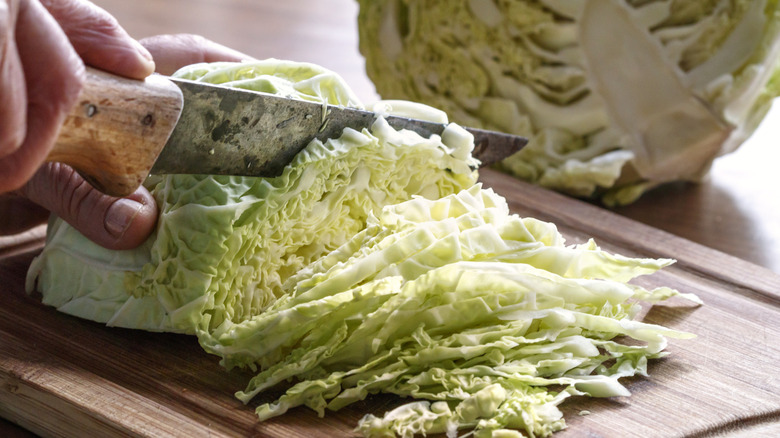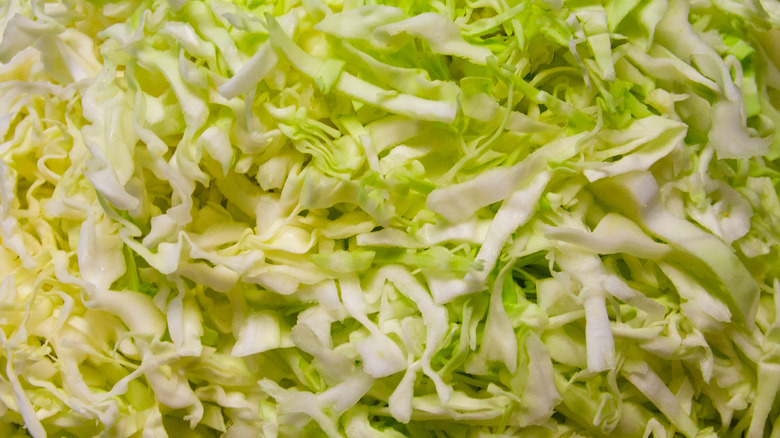The Best Way To Store Cut Cabbage So It Stays Crunchy
Cabbage is not only one of my favorite veggies, but one of my favorite foods in general. You don't have to tell me all of the ways to make cabbage more exciting; I love it whether it's dressed up in a delicious cabbage pasta, chopped up and mixed into stir-fry, or even just placed on a burger patty. The flavor itself is honestly just okay — very neutral, vegetal, and unassuming to me. What I absolutely adore, however, is the texture. Cabbage just ain't cabbage without that snap, so I've always prioritized keeping it in the best possible condition to preserve the crunch. Let's look at some tips for cut cabbage storage that can help you avoid the tragic fate of a floppy, wilted piece of greenery on your plate, too.
Cut cabbage is easy to store, but it only keeps for up to three days – so be sure you remember that, and consume the rest before it wilts. All you need to do is take the remainder of the cabbage head, and keep it in an air-tight environment so it can't oxidize or get soggy. Personally, I just wrap mine up in plastic wrap, which does the job perfectly. You can also use food storage containers, or even large plastic bags if you're in a pinch. But the more air-tight it is, the better, so I'd only use a bag as a last resort unless you can get a good seal. Ideally, keep green or red cabbage in the crisper drawer. You can also store the raw vegetable if it's already shredded — you'll just need to follow a few key steps so it stays crunchy.
How to keep your shredded cabbage crisp
It's never a bad idea to have some raw shredded cabbage on-hand. You can make a zingy som tum-inspired cabbage salad in just a few minutes. Or simply grab a handful to throw into soups, stews, or noodle dishes for extra vitamins and minerals with no extra effort or thought. But how do you store shredded cabbage while also retaining the crisp texture? The answer, once again, is air-tight storage. Use a container or plastic bag that you can push the air out of, and stash it toward the back of the fridge where it's coldest. Again, you'll have to move fast to use it up — so don't let it sit for more than two or three days.
You can store your cabbage in the freezer, too, if you really want some longevity. You'll need to blanch the shreds first, which means cooking them in boiling water for a minute or two, and then dunking them in an ice bath to stop the cooking process. From there, you can line a baking tray with parchment paper and lay your cooked cabbage out on it, patting it dry. Set it in the freezer for an hour, and then dump the hardened cabbage into an airtight container or bag. Frozen cabbage stays good and maintains a decent amount of crunch for a few months, so go ahead and add it to your favorite dishes throughout the year. You just need to thaw it in the fridge before you use it — or if you're adding it to homemade soups, the strips can go in the hot pan straight from the freezer.

